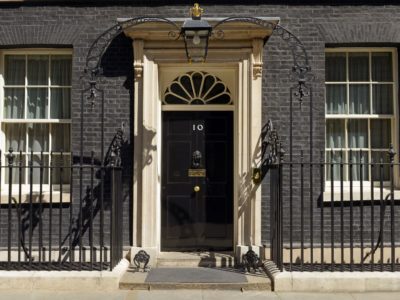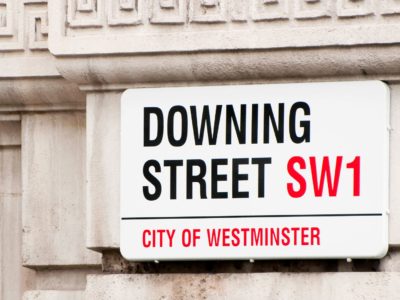The UK government has recently announced proposals to put the environment at the forefront of new housing and commercial developments in England, as the new plans were unveiled by Michael Gove, Environment Secretary.
According to Michael Gove, under the new proposals that are being put forward for consultation, property developers could be required to deliver a ‘biodiversity net gain’ when they start building work on a new development. This, the proposal aims will help to ensure that natural habitats and wildlife will be enhanced and left in a better state than they were before the development work began.
Under the new proposal currently under consultation, property developers would be required to make an assessment of the type and overall condition of the natural habitat of a proposed site, before they submit development plans. Plans for industrial sites and car parks would be placed lower on this new scale, whereas natural woodlands and grasslands would receive a higher environmental ranking.
This proposed new environmental ranking system will aim to give developers a more in-depth guideline regarding the importance of certain natural habitats in order to better protect them during the development process.
Once developers have made the required environmental assessment under the new proposal, they would then have to detail how their development plan would improve the biodiversity of the location. This could encompass anything from creating space for green corridors, forming local natural spaces for wildlife or simply planting more trees on the site.
However, the new government proposal does include information for new development plans that would be unable to provide improvements for the biodiversity of the site. In these rare cases, a new levy would be imposed on developers in order to fund new habitat creation or biodiversity improvement elsewhere.
The new proposals were created as a way to give Mother Nature and members of the public a better deal when new development plans are submitted for planning permission. Not only that, but the government hopes that millions of pounds will be invested in a positive environmental impact that would be implemented by developers on an annual basis.
There are some property developers in both the residential and commercial side of the industry, who have already chosen to adopt a biodiversity net gain consideration into their business approach. The newly proposed government approach will ensure that new standardised and compulsory regulations will help to provide property developers with a clear line to follow when it comes to improving the natural environment through the inclusion in development.
This new proposal will also take into consideration those brownfield or small sites that will be exempt from the new regulations, according to Michael Gove, Environment Secretary.
By introducing clearer and compulsory environmental guidelines, the government will be less restricted on their promise to deliver 300,000 new homes a year by mid-2020. It is hoped that by introducing these new environmental measures that not only will there be more homes built, but the UK’s natural environment will also be left better off.
The new proposal that has been launched for consultation is part of the government’s 25 Year Environment Plan. These new proposals follow the July launch of the revised National Planning Policy Framework, which called for stronger environmental protection, with a focus on ensuring that wildlife will thrive despite the government’s urgent need to deliver new homes.
What exactly is ‘biodiverisity net gain’?
The recent government proposals that were announced by Michael Gove, Environment Secretary, define the government’s ambition to add the principle of ‘biodiversityl net gain’ into the property development planning process for newly proposed sites.
This ambition is to help the government create measurable improvements for the English natural environment, which will include flood defences, improving air quality and maintaining clean water. The government is working in collaboration with property developers, energy providers, water companies, waste specialists and tourism services, in the hopes that the environment will be better considered and protected in future.
Michael Gove commented on the new proposals recently announced by the government: “Our commitment to protecting and enhancing our natural world can go hand in hand with our ambition to build more high-quality homes.
“Mandating biodiversity net gain puts the environment at the heart of planning and development. This will not only create better places for people to live and work but ensure we leave our environment in a better state for future generations.”
The new proposals will not only protect areas of ancient woodland alongside Sites of Special Scientific Interest, but it will also build on and include the experience of local authorities and those developers who have already begun to include ‘environmental net gain’ in their processes, such as the Berkley Group, that the government have outlined as a recent example.
The Berkley Group firm have included ‘environmental net gain’ across their development sites, as well as working closely with London Wildlife Trust to build Kidbrooke Village in East London. This new residential site in Greenwich will provide 4,800 homes in the village development located within 20 hectares of parkland.
Commenting on the new government proposal, Dr Julia Baker, biodiversity technical specialist at Balfour Beatty said: “Balfour Beatty strongly supports the concept of biodiversity net gain and the government’s 25 Year Environment Plan for sustainable use of land.
“We are leading the way in developing new standards, continually seeking ways for our construction projects to generate net gains in biodiversity, in ways that leave wider social and environmental benefits.
“Early planning allows for biodiversity net gain measures to be integrated into the design, programme and budget of schemes, reducing the cost and ultimately generating long-term benefits for nature and society.”
Although the new government proposals are encouraging for some, there are concerns from other MPs that this approach is too simplistic. Joan Walley MP, Chair of the Environmental Audit Committee commented: “Biodiversity offsetting could improve the way our planning system accounts for the damage developments do to wildlife if it is done well.
“But Ministers must take care to get offsetting right or they risk giving developers carte blanche to concrete over important habitats.
“Many witnesses to the inquiry were concerned that the Government’s proposal would allow offsetting (to provide environmental net gain) to be applied to ancient woodland and Sites of Special Scientific Interest. There is a danger that an overly simplistic offsetting system would not protect these long-established eco-systems.”
Depending on the results following the consultation process for the new proposals, it is uncertain how or when they will be implemented into new regulations that developers will have to follow; and indeed how successful these measures will be for England’s environment.























Comments